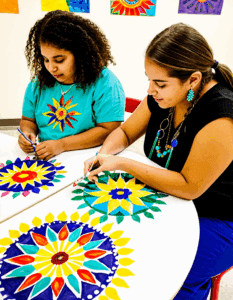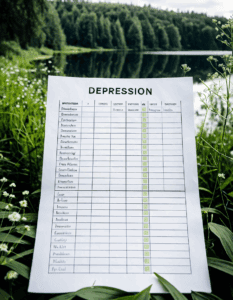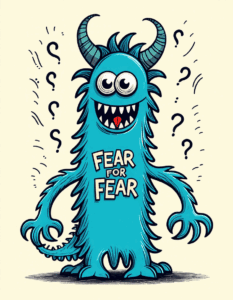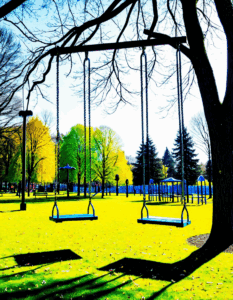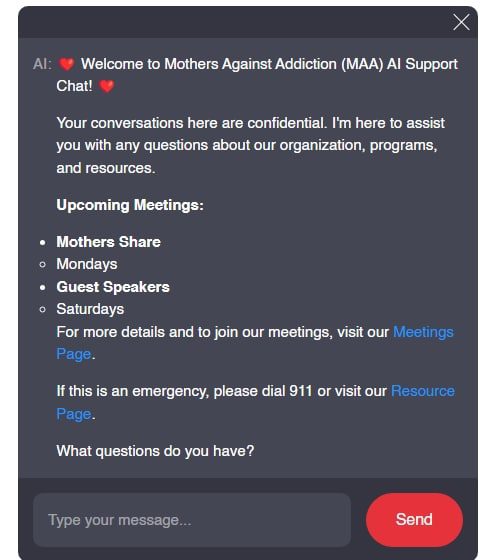As parents, we often wish we could read our children’s minds, especially when it comes to their emotional and mental wellbeing. Unfortunately, real life isn’t that straightforward. Understanding the indicators that show your child might be struggling with addiction or serious emotional issues is crucial. Being able to recognize these signs early can be the lifeline they desperately need. In this article, we’ll delve into the key indicators, examining emotional, behavioral, and physical signs that call for immediate attention.

1. Key Indicators of a Struggling Child: Recognizing the Signs
1.1 Emotional Withdrawal
Emotional withdrawal is one of the most critical indicators of an underlying issue. Children grappling with addiction often pull away from those they once cherished. A vibrant teenager who used to be involved in family outings might now prefer to hibernate in their room. If late-night laughter with friends has given way to solitary video gaming or binge-watching shows, don’t shrug it off as normal teenage moodiness. Instead, recognize that such changes could signal a rough road ahead.
For instance, consider young Sarah, who used to be a social butterfly. After some difficult experiences, she began isolating herself, sharing fewer moments with peers and family. If this sounds familiar, it could be time to tune in. After all, emotional wellness can often hinge on our connections to others.
1.2 Changes in Academic Performance
A decline in academic performance is another significant indicator of distress. If your previously diligent child suddenly exhibits plummeting grades or a disengaged attitude toward schoolwork, it raises a red flag that should not be ignored. Statistics show that substance use—like prescription medications or alcohol—can significantly impair a child’s cognitive abilities, leading to difficulties in concentration and memory. This overwhelming burden restricts their ability to excel academically.
Take Jake, for example. Once a straight-A student, his drop in grades became apparent after he started experimenting with drugs. As his passion for school faded, his parents noticed that something deeper was unfolding. Keep your eyes peeled for changes in attitude toward education, as they can often be the first clear “indicators” of a bigger problem.
1.3 Physical Appearance and Hygiene
Changes in physical appearance and self-care habits can also serve as clear indicators of a child in distress. A once-tidy teenager who neglects their hygiene or sports baggy clothes may be facing serious challenges. A child who used to maintain their appearance may start showing signs of weight fluctuation or a lack of grooming. While it’s normal for teenagers to test styles, drastic alterations could indicate something more concerning.
Picture Emily, who used to keep her room and her appearance neat. After her friends introduced her to substance use, she became disheveled and neglected her self-care. Parents, these transformations in hygiene and grooming could be the first subtle signs that attention is needed. Don’t wait until it escalates; take action.

2. Practices and Consequences: Understanding Behavioral Changes
2.1 Risky Behaviors in Social Situations
Engagement in risky behaviors is often a direct consequence of substance use. If your child starts making questionable choices, like attending parties known for drug use or associating with a reckless crowd, it’s crucial to confront these habits swiftly. Not only do these behaviors place them in harmful situations, but they also indicate a possible dependency on substances.
For instance, when you find your child frequently sneaking out at night, it could connect to their attempts to fit in with friends who engage in drug use. There’s no denying the warning bells that should be ringing when you recognize such “practices.” Addressing these trends early on can prevent escalating consequences down the line.
2.2 Lying and Deception
If it feels like you need a private investigator to uncover the truth about your child’s activities, consider that they might be hiding something significant. A notable increase in dishonesty may indicate their attempt to mask the impact of substances on their life. When asking simple questions leads to evasive or frantic responses, it’s essential to zero in on those behavioral shifts.
Consider the story of Lucas, who began lying about his late-night hangouts and drug use. His parents initially brushed it off as typical teenage rebellion until they discovered the severity of the situation. When it feels like you’re in a web of lies, it’s time to shine a light on the truth.
2.3 Emotional Outbursts and Mood Swings
Frequent mood swings or unexpected emotional outbursts can be red flags indicating distress. A once stable teen who suddenly displays fits of anger, sadness, or anxiety might be grappling with more than just growing pains. Changes in their emotional landscape can correlate strongly with substance misuse.
Let’s reflect on Mia, who transitioned from a peaceful demeanor to unpredictable anger. Her parents noticed she would fly off the handle over the smallest issues. These mood swings served as a glaring reminder that something deeper was amiss. Emotional health thrives on consistency; any sudden fluctuations can signal the need for intervention.
3. Sequential Actions: What Steps Parents Can Take
3.1 Open Communication
An open dialogue is crucial when confronting addiction and related issues. Establishing a safe space for discussions helps children feel comfortable sharing their experiences without fear of judgment. Regular conversations about both feelings and experiences can break down barriers, fostering trust and openness.
Imagine carving out time for weekly talks where the focus is on feelings and needs. Ask questions like, “How are you feeling about school?” or “What do you think about your friends’ choices?” Such questions can redirect conversations toward vulnerability and honesty.
3.2 Seek Professional Help
If signs point to challenges you can’t navigate alone, seeking professional help is crucial. When dialogues reveal troubling trends, consider enlisting experts. Therapists and addiction specialists can provide tailored guidance based on your child’s unique situation.
For instance, The Retreat at Lancaster County works specifically with adolescents recovering from addiction and offers far-reaching resources for families in distress. Approaching professionals takes courage but opens up new avenues of support regardless of the challenges you’re facing.

4. Other Forms of Support: Building a Safety Net
4.1 Family Involvement
Engaging family as a supportive unit can significantly aid in treatment efforts. Involving siblings and extended family can cultivate a sense of unity and support that shows your child they are not alone in their journey. It’s vital to foster an environment of strength and connection, as recovery is most effective when families unite.
Consider coordinating family therapy sessions where everyone can share experiences. Gather around the dinner table to discuss feelings, trust-building activities, or even game nights to create lasting memories and create a sense of safety.
4.2 Support Groups
Don’t underestimate the power of community in tackling addiction. Support groups specifically designed for parents, like those offered by Mothers Against, create a space for shared experiences and coping strategies. Listening to others who have walked similar Paths empowers you to remain strong.
Sharing insights with fellow parents helps build resilience and fortifies your foundation in managing your child’s struggles. There’s immense power in connection, and participating in these groups can be a lifeline, especially during desperate times. Discover how valuable family can be in fostering recovery at Mothers Against resources.

Innovative Wrap-Up: Turning Awareness into Action
Raising a child in today’s world, where drug use seems to lurk around every corner, is daunting. Recognizing these indicators can empower you to support your child effectively. Instead of feeling overwhelmed by challenges, parents are encouraged to transform awareness into action. Create an environment rooted in trust, consider professional support, and focus on the value of community during failed attempts to reach out.
Remember, you’re not alone in this journey. Organizations like Mothers Against provide a safety net during turbulent times, so find solace in the community. Taking those first steps—acknowledging, reaching out, and engaging in honest dialogues—can dramatically change your child’s outcome. Help is available, and it all starts with compassion, courage, and action.
Indicators That Show Your Child Needs Help Now
Recognizing the Signs
Every parent fears the thought of their child struggling silently, but knowing the indicators can be life-saving. Changes in behavior, social circles, or academics can all serve as warning flags. It’s like standing in the beautiful Monongahela National Forest—a serene façade that can hide complications beneath the surface. A sudden isolation from previously close friends or a drop in grades can signal deeper issues lurking in the shadows. Just like finding the perfect time to catch a film at Cinemark Century Huntington Beach and XD, timing and attention to detail are crucial in spotting these indicators.
The Subtle Changes
Another thing to keep an eye on is emotional change—perhaps your child’s personality seems off-kilter. It’s not uncommon for teens to face ups and downs, but extreme shifts suggest it’s time to investigate further. For instance, have you noticed them withdrawing from activities they once enjoyed? That’s a clear indicator that something might be amiss and a cue to understand what’s behind these changes. You might find it helpful to explore what phi stands for if you’re looking for more conceptual clarity about phases kids might go through during these tough times.
Beyond the Surface
Engaging with your child can sometimes reveal shocking truths, like characters in An Unfinished Life Cast facing their extraordinary challenges. While conversing, consider using movie nights with new movies to stream as a bonding experience—this could open avenues for discussions about what’s troubling them. Pay attention to any signs like irritability, secretiveness, or drastic lifestyle changes; these are potent indicators that your child may require immediate help. Through it all, remember, it’s essential to approach these conversations with empathy and understanding, much like the thoughtfully designed styles from Mitchell and Ness that resonate through time, reflecting individuality while providing support for youth in need.
By keeping an eye out for these indicators, you can better navigate the journey of helping your child. After all, early intervention can change lives.




